🎬🎬🎬 Ladyhawke (1985)
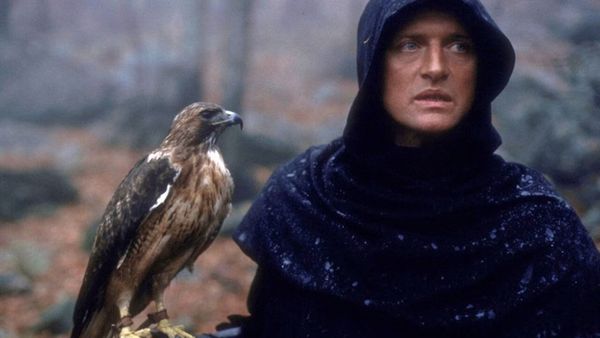
“Ladyhawke” (1985) is a fantasy film directed by Richard Donner, known for his work on “Superman” and “The Goonies.” The film stars Rutger Hauer as Etienne Navarre, Michelle Pfeiffer as Isabeau d’Anjou, and Matthew Broderick as Philippe Gaston. The film is renowned for its unique blend of fantasy, romance, and adventure, set against a backdrop of medieval Europe.
The story follows Philippe Gaston, also known as “Mouse,” a young thief who escapes from the dungeons of Aquila. Philippe is soon captured again, but he is saved by the enigmatic former captain of the guard, Etienne Navarre. Navarre travels with a majestic hawk, which is actually his beloved Isabeau, transformed by a curse. Isabeau, in turn, transforms into a human by night, while Navarre becomes a wolf, ensuring the two lovers are forever separated, able to see each other only at dawn and dusk.
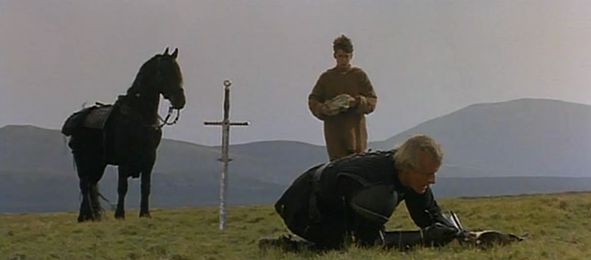
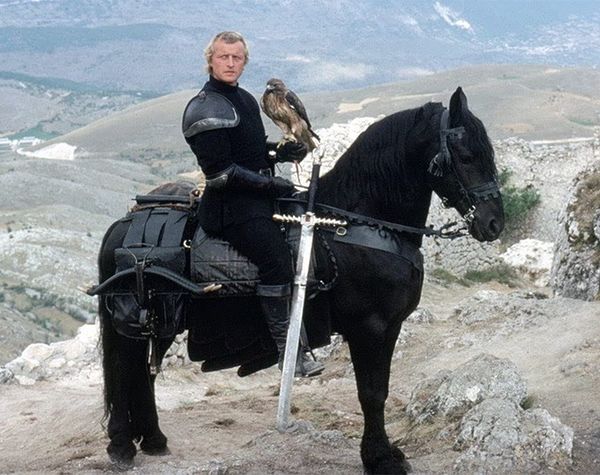
The curse was placed on them by the jealous and vengeful Bishop of Aquila (John Wood), who desired Isabeau for himself. Furious over Isabeau’s love for Navarre, the Bishop conspired with a dark sorcerer to cast the spell, keeping the lovers apart. Determined to break the curse, Navarre and Isabeau enlist Philippe’s help, believing that divine intervention is their only hope.
As the trio journeys back to Aquila, Philippe acts as a go-between for the lovers, relaying their messages to one another. Along the way, they encounter various challenges, including soldiers sent by the Bishop to capture them. Philippe’s cunning and wit prove invaluable in their quest, and he gradually becomes a trusted friend to Navarre and Isabeau.
One of the film’s notable elements is its cinematography, capturing the stunning landscapes of Italy, where much of the film was shot. The visuals contribute to the enchanting and otherworldly atmosphere, enhancing the fantasy elements of the story. The use of light and shadow is particularly effective in illustrating the transformation sequences and the passing of time.
The film’s score, composed by Andrew Powell and produced by Alan Parsons, features a distinctive blend of orchestral and electronic music. While it received mixed reviews, the score contributes to the film’s unique tone and has since gained a cult following.

Rutger Hauer’s portrayal of Navarre exudes both strength and vulnerability, capturing the character’s determination and deep love for Isabeau. Michelle Pfeiffer’s Isabeau is ethereal and captivating, embodying grace and resilience despite her tragic circumstances. Matthew Broderick brings charm and humor to the role of Philippe, providing a light-hearted counterbalance to the film’s darker themes.
The climax of the film occurs in Aquila’s cathedral, where Navarre confronts the Bishop during a solar eclipse, a rare event believed to have the power to break the curse. In a dramatic showdown, Navarre battles the Bishop’s guards and finally faces the Bishop himself. As the eclipse reaches its peak, Isabeau and Navarre are momentarily human together, breaking the curse through their love and the Bishop’s death.
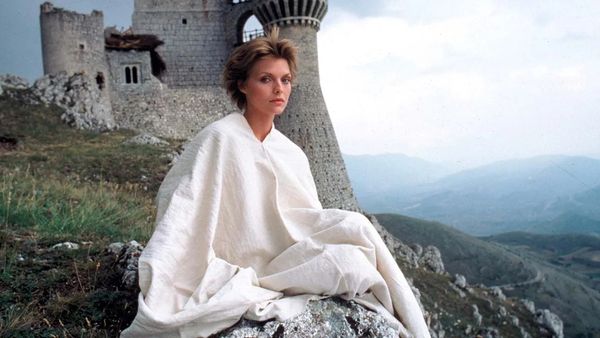
“Ladyhawke” explores themes of love, sacrifice, and redemption, emphasizing the power of faith and the enduring nature of true love. The film’s mix of adventure, romance, and fantasy elements, along with its memorable characters and beautiful settings, have earned it a place as a beloved cult classic.
In conclusion, “Ladyhawke” (1985) is a captivating fantasy film directed by Richard Donner, featuring standout performances by Rutger Hauer, Michelle Pfeiffer, and Matthew Broderick. Its enchanting story, set against the backdrop of medieval Europe, combines romance, adventure, and a touch of magic. With its stunning cinematography, unique score, and timeless themes, “Ladyhawke” remains a cherished film for fans of fantasy and romance.
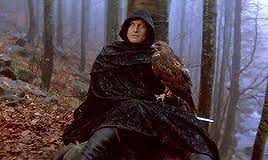
Watch movie:











